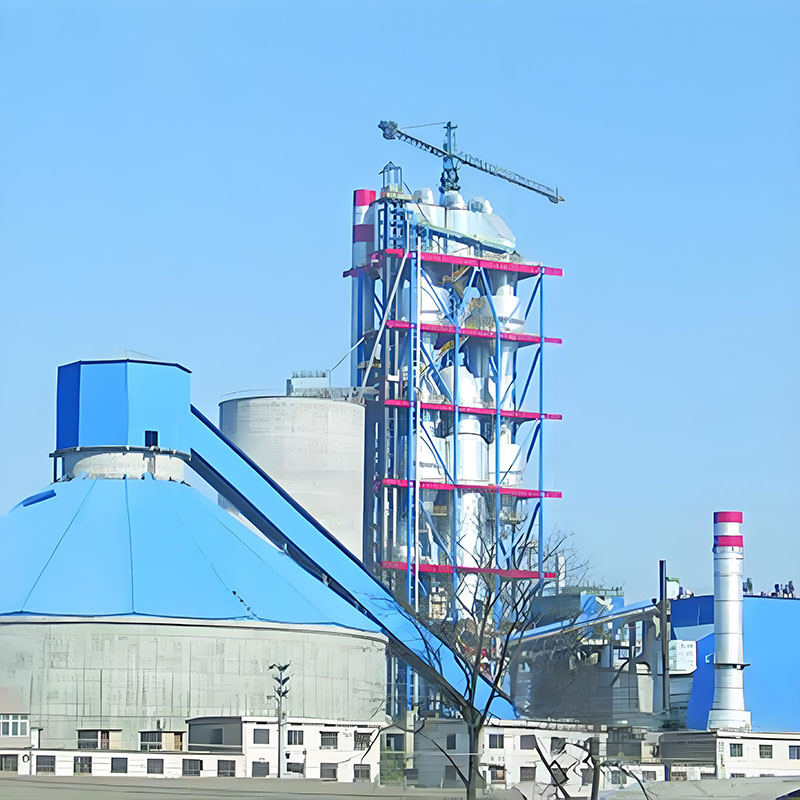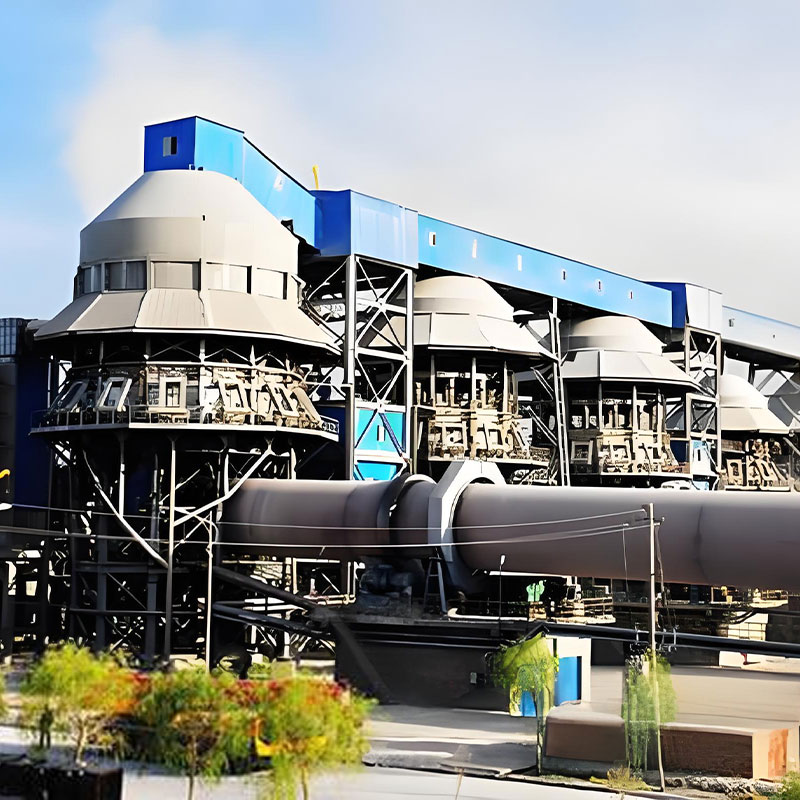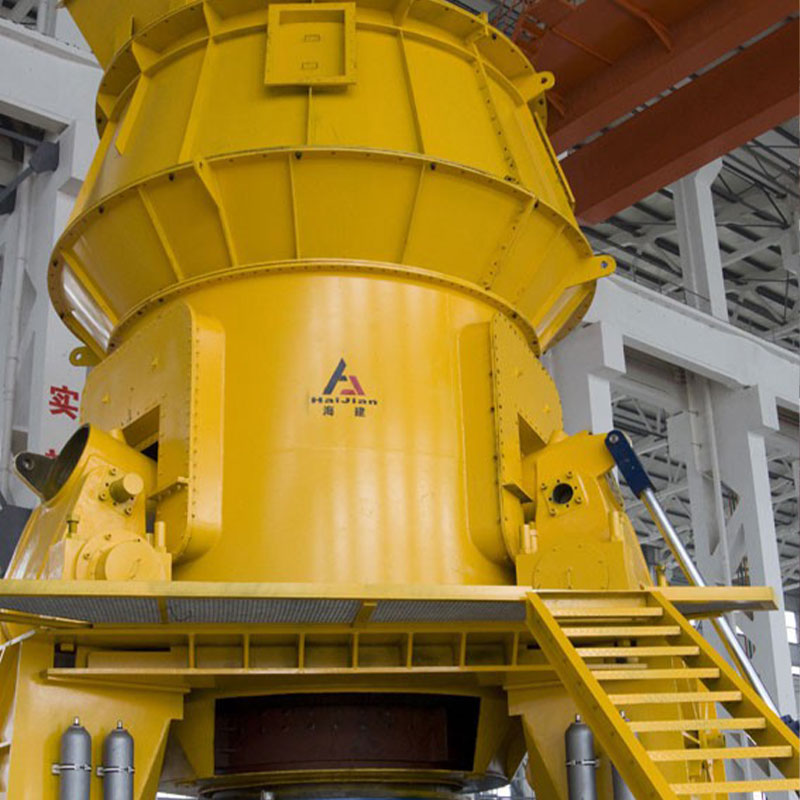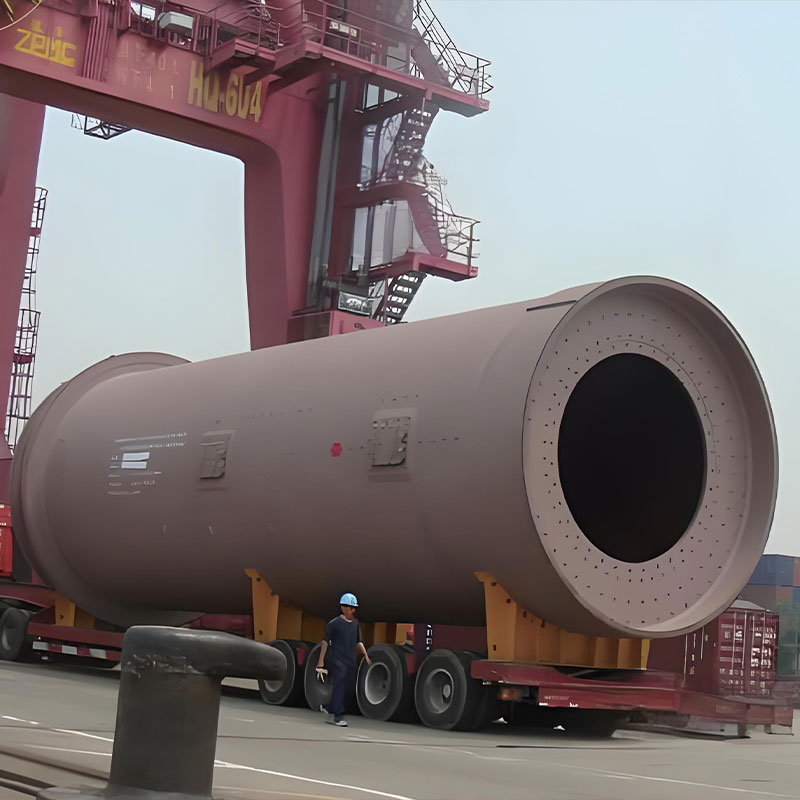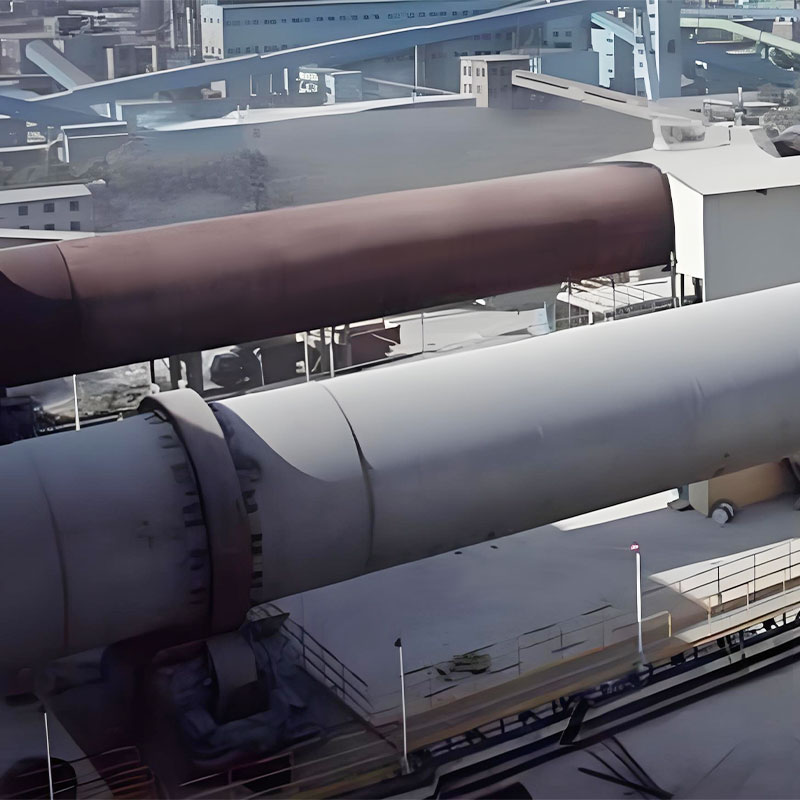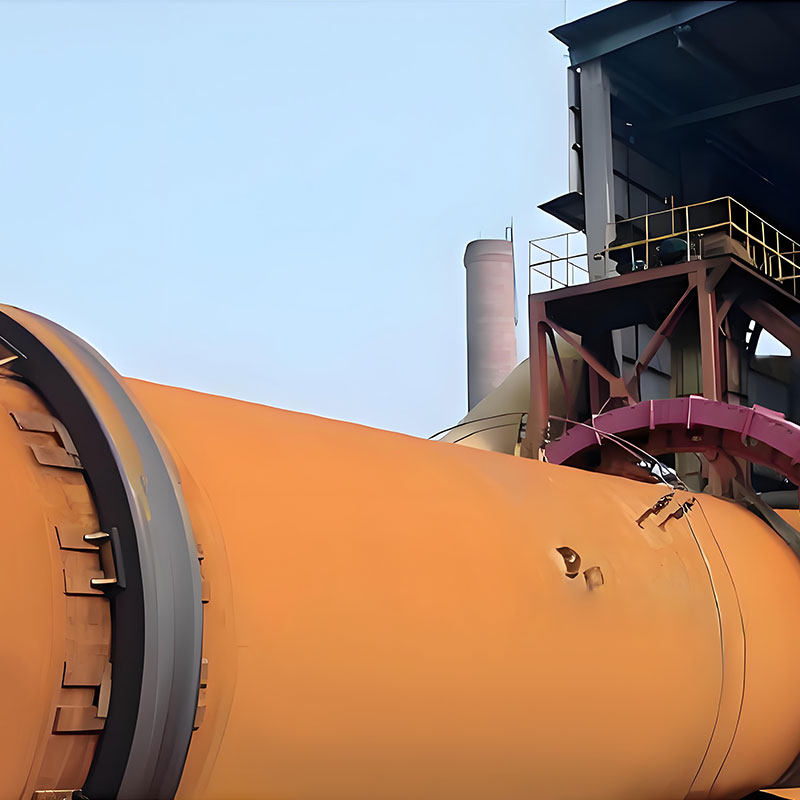What is a lime rotary kiln?
Lime rotary kiln is a large-scale industrial calcining equipment, mainly used to decompose limestone (CaCO₃) into quicklime (CaO, i.e. calcium oxide) and carbon dioxide (CO₂) at high temperature. It is the core equipment of lime production line and is widely used in metallurgy, chemical industry, environmental protection, building materials and other industries. Its main structure consists of a tilted steel cylinder lined with refractory materials, supported by a wheel belt and roller system, and driven to rotate slowly by a large gear ring and gear transmission device.
1. Structural composition of lime rotary kiln
(1) Cylinder
Made of rolled and welded steel plates, lined with refractory bricks, tilted (usually 2.5°~4°), and rotated to move the material slowly.
(2) Support device
Includes rollers, stop wheels and bearings to ensure smooth rotation of the kiln body.
(3) Transmission system
The motor, reducer, gears, etc. drive the kiln body to rotate at a low speed of 0.5~5 rpm.
(4) Combustion system
Using coal powder, natural gas, fuel oil and other fuels, the kiln head burner provides a high-temperature heat source (calcination temperature is about 900~1200°C).
(5) Preheater & Cooler
Preheater: Use the exhaust gas at the kiln tail to preheat the limestone to improve thermal efficiency.
Cooler: Cool the calcined high-temperature lime to below 100°C for easy storage and transportation.
2. Working principle of lime rotary kiln
Feed: Limestone particles (20~40mm) enter from the kiln tail and slowly move toward the kiln head as the kiln body rotates.
Preheating section (kiln tail): The material is preheated to about 800°C by the high-temperature exhaust gas and partially decomposed.
Calcination section (in the kiln): The temperature reaches 900~1200°C, and the limestone decomposes into CaO and CO₂ (chemical reaction: CaCO₃ → CaO + CO₂↑).
Cooling section (kiln head): The high-temperature lime enters the cooler, is cooled by cold air and discharged.
3. Common problems with lime rotary kilns
(1). What is the calcination temperature of a lime rotary kiln?
Optimal temperature range: 1050~1150°C. Too low will lead to raw burning (CaCO₃ is not completely decomposed), and too high will easily lead to overburning (CaO crystals are coarse and activity is reduced).
(2). What to do if rings (nodules) form in the kiln?
Preventive measures: Control the content of SiO₂ and Al₂O₃ in the raw materials (reduce low-melting-point impurities). Optimize the combustion temperature to avoid local overheating.
Treatment methods:
Short term: Adjust the flame shape and burn off the rings at high temperature.
Long term: Stop the machine for manual cleaning or use an air cannon.
(3). How to improve the activity of lime?
Control the calcination temperature (around 1100°C), reduce overburning and raw burning.
Use high-calcium, low-impurity limestone (CaCO₃ content > 95%).
News Category
Recommended Products
It is focused on the overall solution of dry bulk material port transfer system,
research and development, manufacturing, and service
- Product Category
- >Cement production line
- >Environment protection
- >Metallurgical and mining equipment
- >Pressure Vessel
- Quick Links
- >Products
- >Company
- >Equipments
- >Solutions
- >Services
- >News
- >Contact
- Contact us
-
-
 Call us for support+86 13584702563
Call us for support+86 13584702563 -
 Call us for supporthaijian@haijianstock.com
Call us for supporthaijian@haijianstock.com -
 No. 198, Shuanglou Road, Qutang Town, Haian County, Jiangsu Province
No. 198, Shuanglou Road, Qutang Town, Haian County, Jiangsu Province
-


 English
English  русский
русский  Español
Español 